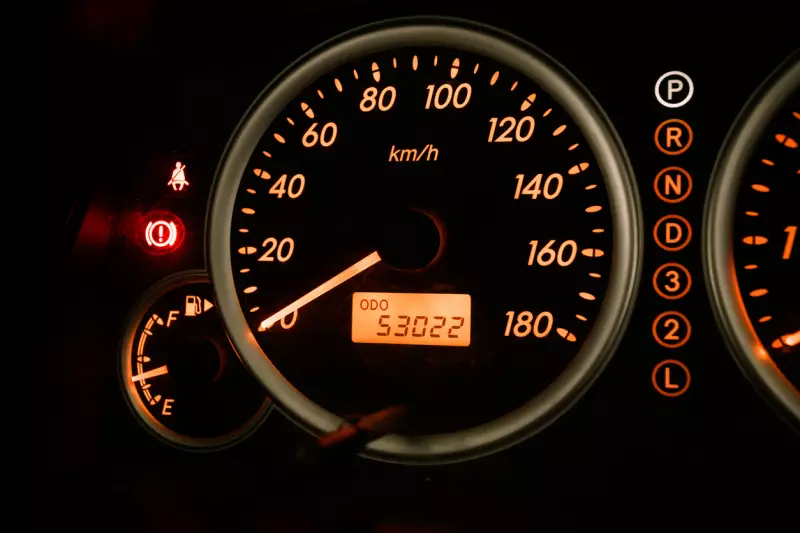Overtime engines accumulate sludge, dirt and grime from day-to-day use, and carrying out an engine flush removes these unwanted materials, significantly improving the engine’s performance. Owning a car isn’t just about cruising down the highway. Your vehicle needs attention and maintenance to improve its performance, longevity, and fuel efficiency, and to prevent costly repairs.
What Is an Engine Flush?
An engine flush is a maintenance procedure designed to cleanse the internal components of an engine by removing accumulated sludge, deposits, and other contaminants using specialized chemicals. Think of it as a detox diet for engines or an automotive equivalent of a juice cleanse.
A professional engine flush is performed by trained mechanics at a service center. These professionals have specialized tools and the expertise to perform an engine flush correctly. They can be relatively expensive. Conversely, a DIY motor flush involves performing an engine flush yourself. It is convenient and cost-effective. However, there is a high risk of making mistakes and damaging the engine as DIYers lack the professional know-how and the tools to effectively conduct an engine oil flush.
What Does an Engine Flush Do?
The primary goal of a clean engine oil flush is to remove sludge, varnish, and deposits from your engine's internal components. The flush cleans the engine's internal components by dislodging, scrubbing, and dissolving contaminants from the engine. During an engine flush, contaminants and deposits are removed from the engine, including:
- Sludge: A thick, sticky substance that forms from the breakdown of engine oil
- Varnish: a hard resinous deposit formed from the oxidation and degradation of engine oil
- Metal Particles: Metal particles from engine wear and tear
- Carbon Deposits: Formed from incomplete combustions accumulated on the piston rings and other combustion chamber components
- Dirt and Debris: Dirt and debris enter the engine through various means, causing wear on engine components
Is an Engine Flush Necessary?
Is an engine oil flush necessary, or just a fancy add-on by your mechanic? The answer isn’t yes or no. Rather it depends on certain conditions, such as your car's age, driving habits, and maintenance history. The following signs may indicate that you may need a motor flush:
- Sludge Buildup: Take a look at the oil cap for sludge buildup. A thick, black, tar-like substance visible under the oil cap indicates you require an engine flush
- Decreased Performance: You notice a drop in the engine power and acceleration. Also, if your engine idles roughly or stalls frequently
- Over Heating: If your temperature gauge is inching toward the danger zone, it might be time to consider that sludge may have blocked the oil passage, preventing proper lubrication and causing your engine to overheat
- Poor Fuel Efficiency: If you notice an unexplained increase in your fuel consumption, chances are that the engine is not running effectively due to a clogged engine from sludge
So, to flush or not to flush? If your car is relatively new, running smoothly, and you are diligent with your oil change, an engine flush is likely unnecessary. On the converse, if your engine has a high mileage and you skip regular maintenance, chances are likely your engine requires a flush.
How to Flush Engine Oil
Performing a motor flush ensures your engine stays clean and runs smoothly. Whether you are a seasoned DIYer or this is your first engine oil flush, here’s a step-by-step guide on performing an engine flush.
Tools
To start, you’ll need all the necessary tools and supplies, such as:
- Engine flush additive
- New oil filter
- Fresh engine oil
- Oil filter wrench
- Socket wrench set
- Oil drain pan
- A car jack and jack stands
- Safety gloves, glasses, and funnel
Preparation
Park the car on a flat surface. Make sure the engine cools down. Jack up the car and locate the engine oil drain plug. Place the oil drain pan under the drain plug.
The Flushing Process
- Add the Engine Additive: Pour the engine flush additive into the oil filter
- Run the Engine: Start the engine. Let it run for up to 15 minutes, allowing the cleaner to work, dissolving and dislodging sludges and deposits
- Drain the Old Oil: Turn off the engine, place the oil drain pan underneath the drain plug, remove the drain plug with the socket wrench, and let the old oil flow out. Install drain plug once completely drained
- Remove Oil Filter: Remove the old oil filter, allowing any remaining oil to drain into the pan
Post-Flush Steps
- Install the New Filter and Replace Drain Plug: Screw the new filter into place. Reinstall the drain plug and tighten it securely with the wrench
- Refill with Fresh Oil: Replace the drained oil with the fresh oil. Start the engine and check for leaks
- Check Oil Level: Turn off the engine, wait a few minutes for the oil to settle then check the oil level using the dipstick
How Long Does an Engine Flush Take?

On average, it takes about 30 minutes to one hour to perform an engine oil flush. However, other factors may affect this time frame.
- Engine Size: Smaller engines take less time to complete an engine flush than larger engines
- Level of Contamination: If your engine is relatively clean, the duration to complete an engine flush is shorter than heavily contaminated engines
- Vehicle Accessibility: If your car’s oil filter and drain plug are easy to reach, it will take less time to complete an engine flush than if your oil filter is tucked far away
- Tools and Experience: If you are an experienced DIYer, it will take you less time to go through the process than a first-timer
Is Engine Flush Safe?
Engine flush procedures are beneficial for cleaning and maintaining your engine and are generally safe. However, they come with certain risks and safety concerns, including:
- Engine oil flush can stir up large sediments settled at the bottom. These sediments can get dislodged and clog up the oil passage
- Engine flush products may contain caustic chemicals that may be too harsh for your engine, especially if the engine is worn
- The leftover flush solution can mix with your new oil if not properly drained, affecting oil performance
Potential side effects of an engine oil flush include:
- Oil Leaks: A motor flush can reveal pre-existing issues with your engine, such as cleaning away a slug that was actually sealing a leak
- Engine Noises: Sludges can sometimes cushion worn-out parts. A flush can dislodge sludges, making the engine sound noisy
- Performance Issues: an engine flush can temporarily cause performance issues when the engine tries to adjust to the freshly cleaned internals
How Long Can You Leave the Engine Flush In?
It is good practice to follow the instructions on the engine flush product. Most engine flush products recommend leaving the solution for about 5 to 15 minutes with the engine running. Leaving the flush solution longer than recommended can spell disaster for your engine. Here are the risks of leaving the solution in for too long:
- Engine flush solvents are powerful and may start attacking various parts of your engine when you leave them in for too long
- When left for too long, engine flushes can remove the protective oil film coating your engine's moving parts, increasing friction and wears
- Leaving the solution in for too long can stir up so many contaminants at once, clogging up the oil passage and filters
How Often Should You Flush Your Engine

An engine flush is not a frequent necessity. The frequency of engine flushes depends on various factors, like your driving conditions, the age of your vehicle, and your car's manufacturer recommendations. Generally, you may flush your engine every 30,000 - 50,000 miles.
- Driving Conditions: If you drive the stop-and-go, traffic driving which causes sludges to build up faster. You might consider engine flushes earlier than persons driving steadily at a constant speed
- Vehicle Age and Condition: If your engine is old and has a lot of mileage, it would require more frequent flushes than newer engines with fewer miles
- Manufacturer's Recommendation: Some manufacturers recommend engine flushes, while others may not. Check the manual to confirm your engine’s recommendation
Is Engine Flush a Good Idea?
An engine flush can be a good idea under certain circumstances, such as neglected maintenance, used cars, or restoring older vehicles. However, for well-maintained and newer engines, it may be unnecessary. Consulting with a trusted mechanic and considering your vehicle’s specific needs can help you decide whether an engine flush is for you.








![Best Sites to Check a Car’s History [2025 Review]](https://media.infopay.net/thumbnails/K8lMeG2QLjE46LPqZlmoi6SunKKdT5qvlaRZk6e1.webp)










![Best Sites to Check a Car’s History [2025 Review]](https://media.infopay.net/thumbnails/K8lMeG2QLjE46LPqZlmoi6SunKKdT5qvlaRZk6e1-w356.webp)
